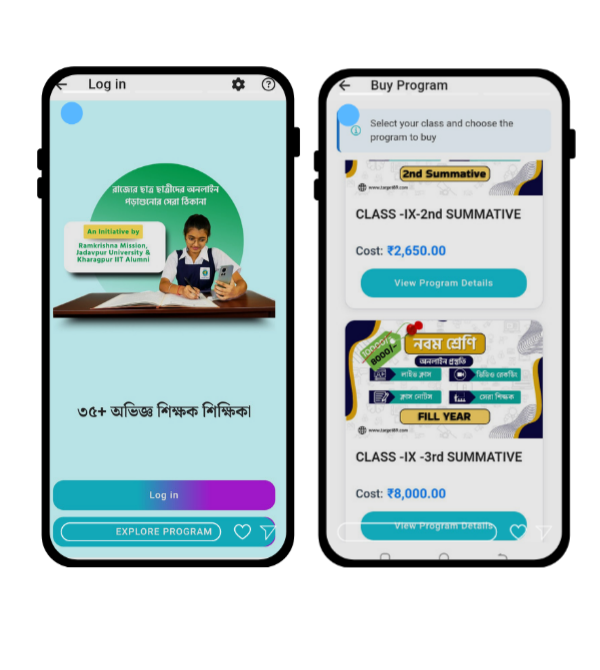The increasing prevalence of smartphones and tablets has dramatically reshaped the landscape of learning. With more individuals relying on mobile devices for their daily activities, including education, Learning Management Systems (LMS) must evolve to meet this new demand. Mobile learning, or m-learning, refers to the use of portable devices to access educational content, enabling learning to occur anytime and anywhere. This shift is driven by the need for flexibility and convenience, as learners seek to integrate educational activities into their busy schedules. Traditional LMS platforms, which were initially designed for desktop use, often struggle to provide a seamless experience on mobile devices due to their static design and limited functionality.
To remain relevant, LMS platforms must adapt by embracing mobile-first strategies. This involves redesigning interfaces to be responsive and user-friendly on smaller screens, optimizing content for touch interactions, and ensuring that all features are accessible on mobile devices. Additionally, mobile learning often requires a different approach to content delivery, such as shorter, more digestible modules and interactive elements that can engage learners on the go. As mobile usage continues to rise, the ability of LMS platforms to provide a robust mobile experience will be crucial in retaining and attracting users, enhancing learning outcomes, and staying competitive in the educational technology market.
Responsive Design: Ensuring LMS Platforms Function Seamlessly on Mobile
Responsive design is a key factor in making LMS platforms functional and effective on mobile devices. Unlike static design, which remains fixed regardless of the device used, responsive design adjusts the layout and content based on the screen size and orientation. This adaptability ensures that learners have a consistent and intuitive experience, whether they are using a smartphone, tablet, or desktop computer. A well-implemented responsive design considers various aspects, including font sizes, button placement, and navigation menus, to ensure that all elements are easily accessible and usable on smaller screens.
Incorporating responsive design into LMS platforms involves using flexible grids and layouts, scalable images, and media queries to adapt to different screen sizes. This approach not only improves the visual appeal of the platform but also enhances functionality by reducing the need for horizontal scrolling and zooming. Furthermore, responsive design can improve load times and performance on mobile devices, which is crucial for maintaining user engagement. As more learners access educational content through mobile devices, LMS platforms that embrace responsive design will be better positioned to provide a seamless and enjoyable learning experience.
Mobile-Friendly Features: Enhancing User Experience on Small Screens
To maximize the effectiveness of LMS platforms on mobile devices, incorporating mobile-friendly features is essential. These features are designed to enhance the user experience by addressing the unique challenges of smaller screens and touch-based interactions. For instance, larger touch targets and simplified navigation menus can help users easily interact with content without accidental clicks or frustratingly small buttons. Additionally, optimizing multimedia content, such as videos and images, for mobile viewing ensures that learners can access rich media without encountering performance issues.
Another important mobile-friendly feature is offline access, which allows learners to download and view content without requiring a constant internet connection. This is particularly valuable for users in areas with unreliable connectivity or for those who prefer to study on the go. Implementing features like automatic bookmarking, which saves a learner’s progress, can also enhance the mobile learning experience by ensuring that users can easily resume their studies from where they left off. By focusing on these mobile-friendly features, LMS platforms can provide a more engaging and user-centric experience that caters to the needs of learners using mobile devices.
Push Notifications and Alerts: Keeping Learners Engaged via Mobile
Push notifications and alerts are powerful tools for maintaining learner engagement in mobile learning environments. These features allow LMS platforms to send timely and relevant updates directly to users’ mobile devices, keeping them informed about important events, deadlines, and new content. Push notifications can serve various purposes, such as reminding learners about upcoming assignments, notifying them of course updates, or encouraging participation in discussions. By delivering these messages in real time, LMS platforms can help learners stay on track and remain actively involved in their educational activities.
To effectively use push notifications, LMS platforms should ensure that the notifications are personalized and contextually relevant to the learner’s activity and progress. Overloading users with excessive or irrelevant notifications can lead to notification fatigue and reduced engagement. Therefore, it’s important to strike a balance and provide notifications that add value to the learning experience. Additionally, incorporating customizable notification settings allows learners to choose their preferred notification types and frequencies, which can further enhance their experience and satisfaction with the LMS platform.
Offline Access: Overcoming Connectivity Challenges in Mobile Learning
Offline access is a crucial feature for mobile learning, addressing the challenges of inconsistent or limited internet connectivity. In many regions, stable internet access is not always available, making it difficult for learners to engage with online educational content. By enabling offline access, LMS platforms allow users to download and view course materials, participate in activities, and complete assignments without needing a constant internet connection. This capability is particularly beneficial for learners in remote areas or those who frequently travel.
Implementing offline access involves creating mechanisms for users to download content, such as text, videos, and quizzes, onto their mobile devices. Synchronization features can then update the learner’s progress and upload any completed work once the device reconnects to the internet. It is also important to ensure that offline content remains updated and relevant, requiring periodic synchronization with the online LMS to reflect any changes or new materials. By addressing connectivity challenges through offline access, LMS platforms can provide a more inclusive and flexible learning experience, accommodating the diverse needs of learners in various situations.
Mobile-Optimized Content: Best Practices for E-Learning on Smartphones
Creating mobile-optimized content is essential for delivering an effective e-learning experience on smartphones. Given the constraints of smaller screens, instructional content must be designed to be easily digestible and engaging. One key best practice is to utilize responsive design principles, which adjust the layout and elements of the content based on the screen size. This ensures that text, images, and interactive components are appropriately scaled and positioned for mobile users.
Content should be broken down into smaller, manageable chunks. Long paragraphs and extensive text can be overwhelming on a mobile device, so it’s important to use concise, clear language and incorporate bullet points, headings, and summaries. Interactive elements such as quizzes and activities should be designed for touch inputs, with larger buttons and touch-friendly interfaces to enhance usability.
Videos and multimedia content should be optimized for mobile viewing by using adaptive streaming, which adjusts the video quality based on the device’s capabilities and connection speed. Additionally, incorporating subtitles and transcripts can improve accessibility and allow users to engage with content in various environments, such as noisy or quiet settings.
Another best practice is to ensure that content is accessible offline, allowing learners to download and access materials without an internet connection. This is especially valuable for users with intermittent connectivity. Regular updates and maintenance of mobile-optimized content are also crucial to address any issues and ensure compatibility with new devices and operating systems. By following these practices, LMS platforms can provide a more engaging and user-friendly learning experience on smartphones.
Gamification and Mobile Learning: Leveraging Mobile Devices for Interactive Learning
Gamification has emerged as a powerful strategy in mobile learning, transforming educational experiences by incorporating game-like elements into the learning process. By leveraging the interactive capabilities of mobile devices, gamification can enhance learner engagement, motivation, and retention. Mobile devices are particularly suited for gamification due to their portability and touch-based interfaces, which facilitate interactive and immersive learning experiences.
Incorporating gamification into mobile learning involves integrating elements such as points, badges, leaderboards, and challenges into the educational content. These elements can create a sense of achievement and competition, encouraging learners to progress through the material and stay engaged. For example, learners might earn points for completing modules or unlock badges for reaching specific milestones, which can drive continued participation and interest.
Mobile devices also enable real-time feedback and adaptive learning experiences. Through gamified assessments and quizzes, learners receive immediate feedback on their performance, allowing them to understand their strengths and areas for improvement. Additionally, gamified scenarios and simulations can provide hands-on practice and problem-solving opportunities, making learning more interactive and enjoyable.
To effectively implement gamification in mobile learning, it’s important to design game elements that align with educational goals and provide meaningful rewards. The game mechanics should be carefully balanced to avoid frustration or disengagement, ensuring that learners remain motivated and focused. By harnessing the capabilities of mobile devices and integrating gamification principles, LMS platforms can offer a dynamic and engaging learning experience that drives learner success.
Adaptive Learning Technologies: Personalizing Mobile Learning Experiences
Adaptive learning technologies play a significant role in personalizing mobile learning experiences, tailoring educational content and activities to individual learner needs. These technologies use data and algorithms to adjust the learning path based on a learner’s performance, preferences, and progress. This personalization helps address diverse learning styles and paces, making education more effective and engaging.
In mobile learning environments, adaptive technologies can analyze data such as quiz results, time spent on tasks, and interaction patterns to customize the learning experience. For instance, if a learner struggles with a particular concept, the system can provide additional resources or practice exercises tailored to that topic. Conversely, if a learner demonstrates proficiency, the system can present more advanced material to keep them challenged and motivated.
Adaptive learning technologies also support individualized feedback, offering insights and recommendations based on the learner’s performance. This feedback can guide learners on how to improve and what areas to focus on, enhancing their overall learning journey. Furthermore, these technologies can create personalized learning pathways, allowing learners to explore topics that interest them and progress at their own pace.
Implementing adaptive learning in mobile environments requires robust data collection and analysis capabilities, as well as seamless integration with the LMS platform. It’s important to ensure that adaptive features are intuitive and unobtrusive, so learners can easily benefit from personalized learning experiences without being overwhelmed by the technology. By leveraging adaptive learning technologies, LMS platforms can provide more tailored and effective mobile learning solutions.
Security Concerns: Protecting Data in Mobile LMS Platforms
Security is a critical consideration for mobile LMS platforms, as the increased use of mobile devices introduces potential vulnerabilities and risks to sensitive educational data. Protecting user information, such as personal details, academic records, and communication, is essential to maintain trust and comply with data protection regulations.
One primary security concern is the risk of unauthorized access to mobile devices. To mitigate this risk, LMS platforms should implement strong authentication methods, such as multi-factor authentication (MFA), to ensure that only authorized users can access their accounts. Additionally, secure communication protocols, such as HTTPS, should be used to encrypt data transmitted between the mobile device and the LMS server.
Another important aspect of security is data storage and management. Mobile LMS platforms should ensure that data is securely stored and protected from unauthorized access or breaches. This includes using encryption for stored data and regularly updating security measures to address emerging threats. Regular security audits and vulnerability assessments can help identify and address potential weaknesses in the system.
Furthermore, users should be educated about best practices for mobile security, such as keeping their devices updated, using strong passwords, and avoiding suspicious links or attachments. By addressing these security concerns and implementing robust protective measures, LMS platforms can safeguard user data and provide a secure mobile learning environment.
Future Trends: What’s Next for Mobile Adaptation in LMS Platforms?
As mobile technology continues to evolve, LMS platforms must anticipate and adapt to emerging trends to stay competitive and meet the changing needs of learners. Several key trends are shaping the future of mobile adaptation in LMS platforms.
One significant trend is the integration of artificial intelligence (AI) and machine learning into mobile learning environments. These technologies can enhance personalization by analyzing learner data to offer tailored content, recommendations, and feedback. AI-driven chatbots and virtual assistants are also becoming more common, providing real-time support and guidance to learners on mobile devices.
Another trend is the growing importance of augmented reality (AR) and virtual reality (VR) in mobile learning. AR and VR technologies can create immersive learning experiences by overlaying digital content onto the real world or simulating virtual environments. These technologies have the potential to revolutionize mobile learning by offering interactive and engaging experiences that were previously difficult to achieve on mobile devices.
Additionally, the rise of 5G technology is set to improve mobile learning experiences by providing faster and more reliable internet connections. This will enable smoother streaming of high-quality multimedia content, support more complex interactive features, and enhance overall performance.
Wearable technology, such as smartwatches and fitness trackers, is also likely to play a role in mobile learning. These devices can offer new ways to engage with educational content and track learning progress in real-time. As these trends continue to evolve, LMS platforms will need to stay abreast of technological advancements and incorporate innovative features to provide cutting-edge mobile learning experiences.
Conclusion
The adaptation of LMS platforms to mobile devices is crucial for meeting the evolving needs of learners. The rise of mobile learning highlights the necessity for responsive design, ensuring LMS platforms function seamlessly on various screen sizes. Mobile-friendly features, such as push notifications and offline access, enhance user engagement and accessibility, while gamification and adaptive learning technologies provide interactive and personalized learning experiences. Addressing security concerns is essential for protecting sensitive data, and staying ahead of future trends like AI, AR, and 5G will help LMS platforms offer cutting-edge mobile learning solutions. By embracing these strategies, LMS platforms can effectively support learners in a mobile-centric world.















